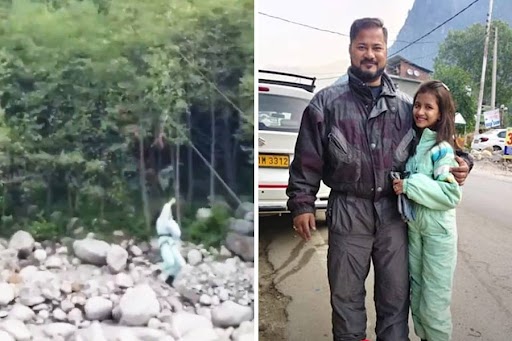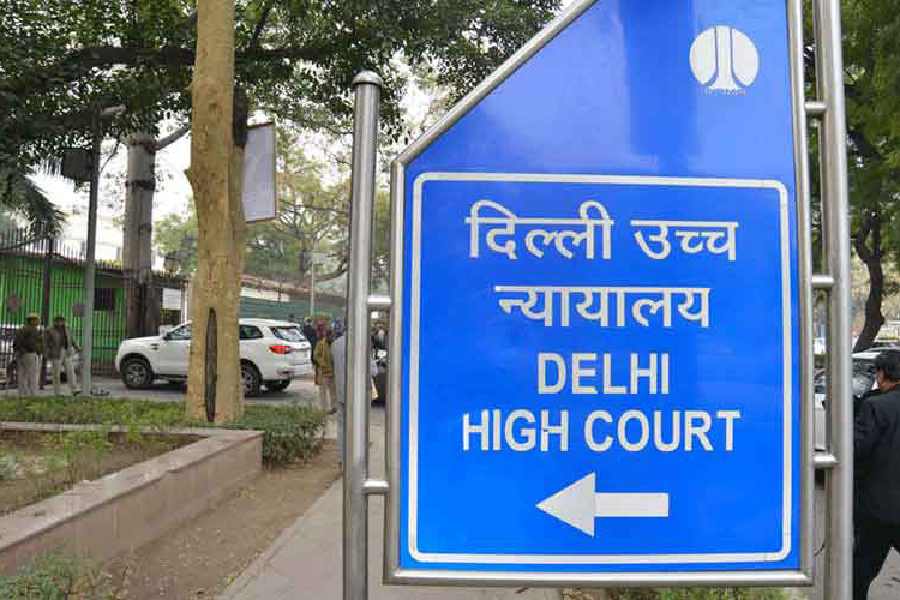A video of a 12-year-old girl plunging from a zipline in Manali has gone viral.
The incident occurred last week when Trisha Bijwe, a resident of Nagpur, was midway through a zipline ride during a family vacation in Himachal Pradesh.
According to PTI, the harness rope snapped, and Trisha fell nearly 30 feet into a rocky gorge.
The footage, which is now widely circulated on social media, shows the girl dangling before suddenly plummeting. Eyewitnesses and officials confirmed she suffered serious injuries. “She was immediately rushed to a nearby medical facility and later referred to the Post Graduate Institute of Medical Education and Research in Chandigarh,” an official was quoted as saying by PTI. She is currently under treatment at a private hospital in Nagpur.
Recurring failures
The Manali incident is not isolated. Just a month ago, a 28-year-old woman, Taral Arun Atpalkar, died while ziplining at the Rajgad Water Park and Resort on the Pune-Satara highway. Her uncle, Nandkishor Shripati Atpalkar, told Pune Times Mirror that there were no safety nets or fallback measures in place. “She fell 25–30 feet onto a cement block. There were no precautions,” he said. “We rushed her to the hospital, but doctors declared her dead.”
In another incident last year, Ranjini N, a 35-year-old nurse from Attibele, died at Jungle Trailz Resort near Bengaluru after a zipline cable snapped. She was on a team outing with colleagues when the fatal fall occurred.
Back in Udaipur in 2018, two individuals collided mid-air during a zipline ride at Chirwa Ghat. Officials had failed to assess wind conditions and released a second rider before the first had completed his run. A four-year-old child was also involved in that crash. No trained personnel were reportedly present on site at the time.
Without trials, it’s risky: Experts weigh in
The Telegraph Online reached out to experienced senior zipline operators to understand how such mishaps can be avoided.
Kamal Singh, who has been working at the Snow Leopard Adventures’ Camp Panther in Shivpuri near Rishikesh for over a decade, says the Manali incident highlights grave procedural lapses.
"Ziplining is a high-risk activity. At our site, no one is allowed to go on the main line —73 metres above the Ganga, without completing a trial on a practice zipline," Singh said. "We start with a 15-minute safety briefing, followed by a test run. Only after the instructors assess the customer’s fitness and issue a clearance do they proceed to the main zipline...we call it the high-line."Singh insists that safety gear, particularly the harness and cables, must be subject to rigorous checks. “There must be a log register for each rope — how long it’s been used, whether it's showing signs of wear. Monthly checks are a must,” he said. “If a rope is no longer fit, it must be replaced immediately.”
A regular zipliner who requested anonymity tells The Telegraph Online, "most operators don’t carry liability insurance and such accidents rarely lead to legal or administrative action, with many cases buried due to local influence. Are operators properly trained, and is their equipment regularly inspected? And when lives are lost, why are so few held accountable?"
Flagging the risks during the upcoming monsoon season, he further added, "The operators are so profit driven they will allow ziplining during the rainy season and will give customers a raincoat, all at the cost of safety...ziplining may not be a high risk activity in general but it should be avoided during the monsoon season. Yet, social media is flooding with such videos"
No national oversight
Currently, there is no single national regulatory body specifically monitoring ziplining or similar high-risk activities in India. While the Union Ministry of Tourism does provide some guidelines for adventure tourism, enforcement is left to local authorities.
In the Manali case, local police have indicated that the safety protocols followed by operators may now come under review.
The spate of these recent accidents raises urgent questions. Are India’s adventure tourism destinations adequately equipped to handle the growing influx of thrill-seekers?
The Internet has concerns about this negligence plaguing India’s adventure tourism sector.
A post on X read: “Zip line accident in Manali. Please try and avoid doing all this. I don't even know who and how much these guys are supervised and in peak season they will do anything to make money.”
Another user wrote, “These equipment must have an expiry date on them and an agency to certify their credibility. This seems careless, sloppy.”
Until these questions are addressed with seriousness and urgency, experts warn that the next viral video could again involve another tragedy.
As Kamal Singh puts it: “No adventure sports activity is ever 100% safe. But with proper systems in place, no rider should have to fear for their life.”










